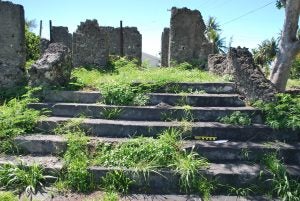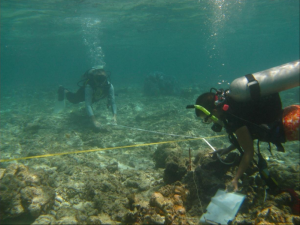 Feasibility Study
Feasibility Study
Spanish cultural heritage continues to play a role in social, cultural, and political developments in Micronesia and can contribute to a broader understanding of Indigenous and Spanish histories in the Pacific. In the Commonwealth of the Northern Mariana Islands (CNMI), Spanish cultural heritage has been little researched and investigated. In 2009 I conducted a preliminary project into the potential for research on Spanish cultural heritage in the CNMI. The project documented Spanish cultural heritage by identifying known and potential sites recorded in disparate sources such as grey literature, primary and secondary historical sources located in the library, archives, and museum holdings, and conversations with heritage practitioners and locals. Known and potential heritage sites were then categorized into research themes.
Seventy heritage “sites” (including tangible and intangible heritage) were identified during the project. Of those 70, 25 were located on the island of Tinian, 21 on Rota, 14 on Saipan, 4 on Agrihan, 4 on Pagan, and 2 were in the general vicinity of the Mariana Islands. Five main themes emerged during the project: culture change and identity, missionization, changing nature of economic activities, maritime sphere, and Indigenous history. The research revealed that there still exists today a strong connection with the history of the Spanish colonial period which appears in every aspect of island life from food to religion. It is hoped that this approach will contribute to evaluating the significance of Spanish cultural heritage for research and management purposes in the CNMI. Master’s student Aleck Tan is currently researching cultural impacts on two 17th century Manila galleons in the CNMI for her thesis.
For more information about this research study check out the a conference paper on the project.

Japanese Light Wreck
Previous underwater archaeology investigations conducted in the western Pacific’s Northern Mariana Islands have largely focused on WWII remains, despite the islands’ rich colonial history. In July 2010, a marine biologist from Saipan told me of a possible wooden shipwreck site in Tanapag Lagoon. In 2011, we conducted a project with Saipan’s Coastal Resource Management Office, Historic Preservation Office (HPO) and Division of Environmental Quality (DEQ). This was the first investigation of a colonial wooden shipwreck in Saipan. The project was non-invasive and consisted primarily of visual survey and mapping and artifact identification. Upon inspection, several shards of green bottle glass, iron and copper alloy fasteners, ballast stones, and burnt timbers were found encrusted in the reef and sand. The shallow and accessible nature of the site, the breadth of the scatter, and the fact that no cargo and very little removable or reusable items remain, are all possible indications of salvage at the time of wrecking.
Due to proximity of a prewar Japanese channel marker, the site was referred to as the ‘Japanese Light shipwreck.’ Archaeological and historical data suggest that the remains of the Japanese Light shipwreck site are those of a mid to late 19th-century wooden sailing vessel. The detailed study of these remains contributes to the growing database of sites in the waters surrounding Saipan and helps us better understand the island’s maritime activities before World War II.
Master’s student Sarah Nahabedian investigated the shipwreck for her thesis (Nahabedian 2011).
For more information about the Japanese Light shipwreck see the report and publication from 2015.
